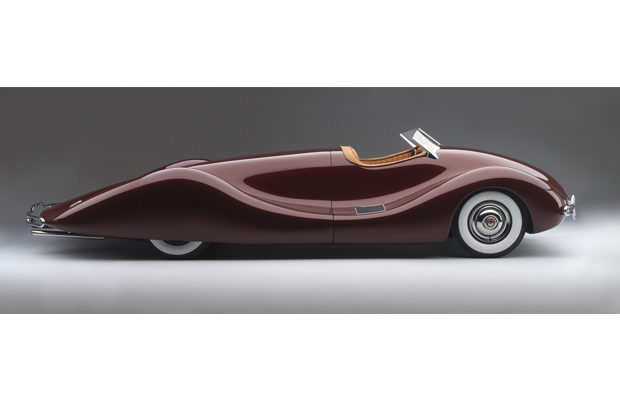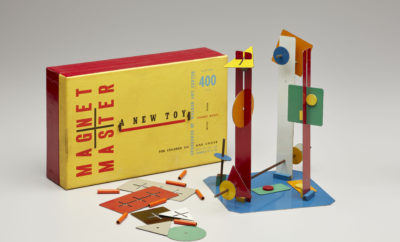 Norman Timbs Special, 1947. Courtesy of Gary and Diane Cerveny/Peter Harholdt photo.
Norman Timbs Special, 1947. Courtesy of Gary and Diane Cerveny/Peter Harholdt photo.
Exhibition
DREAM CARS IN ATLANTA
In search of a (vicarious) thrill ride? Make your way to the High Museum in Atlanta, where curator Sarah Schleuning’s exhibition Dream Cars: Innovative Design, Visionary Ideas is on view until September 7. Featuring some of the rarest and most imaginative automobiles ever built, the show includes seventeen “concept” cars from the 1930s to 2001—cars that represented (and represent) the amazing possibilities for the future of driving.
Built by automakers, custom coachbuilders, and independent designers, most concept cars are never intended for series production but rather are the testing ground for innovations that might find expression in automobiles produced decades later. William Stout’s 1936 Scarab, for instance (which he envisioned as essentially a living room on wheels), could be considered the grandfather of today’s minivan, while “L’Oeuf électrique,” a small, almost spherical electric “bubble car” designed in 1942 by Frenchman Paul Arzens for his personal use during the German occupation of Paris, anticipated the postwar boom for fuel-efficient mini-cars.
Chrysler’s sleek 1940 Thunderbolt offered a radical aerodynamic aluminum body, hidden headlights, enclosed wheels, a retractable one-piece metal hardtop (controlled by push buttons on the dashboard, which was leather- covered and featured round, etched Lucite dials), and an experimental semiautomatic overdrive transmission. Mechanical engineer Norman Timbs hand-built his gorgeous 1947 Special, a futuristic doorless roadster capable of more than a hundred miles an hour. General Motors’ 1953 Firebird I was the first gas turbine-powered automobile built and tested in the U.S. In essence a wingless jet plane for the road, it never took off for myriad technical reasons. Then, there was the three-wheeled Runabout with a built-in shopping cart.
These are just a few of the autos that make up the story told in Dream Cars. In addition to the cars, the exhibition includes conceptual drawings, patents, and scale models. The accompanying catalogue is gorgeously illustrated and packed with every bit of information you could possibly want about these dream machines, built and unbuilt. If you’re a car person and can’t get to the show, the book alone is a must-have.












